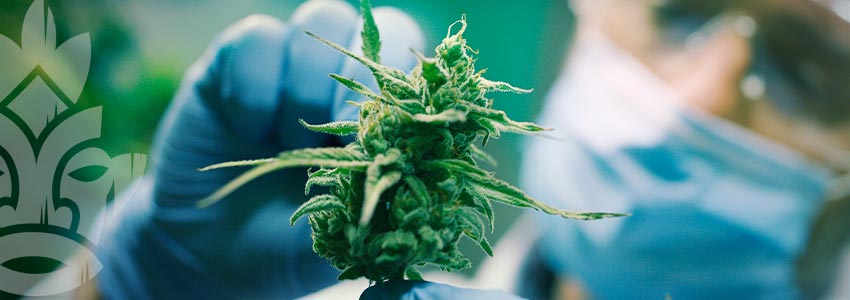Don't have an account?
Register NowYou have to add to cart at least 5 bottles or any program to make checkout.
- BlogWhat Is Marijuana Withdrawal And How To Deal With Symptoms
What Is Marijuana Withdrawal And How To Deal With Symptoms
Published: September 19th, 2019
Categories:
Cannabis Info • How To

If you are a regular consumer of marijuana, you may have noticed that taking a break from the green stuff has your face turning red. This is because common cannabis withdrawal symptoms include anxiety, stress, headaches, and even physical aches.
The longer that someone consumes marijuana, and the more they consume, the more likely they are to experience some form of withdrawal. However, unless you are smoking copious amounts of the herb, dealing with cannabis withdrawal is really not that much different than dealing with any other low-impact form of withdrawal.
IS MARIJUANA ADDICTION A REAL THING?

Cannabis addiction is certainly a real thing—although it helps to give a little context first. If people can become addicted to stimulants like television and food, then why not something as special as cannabis? Addictions are compulsive behaviours, and forcing them to stop will undoubtedly cause some level of discomfort or distress, even if only at a molecular level.
Several studies have indicated that a sudden halt in heavy or chronic cannabis use triggers a specific kind of withdrawal syndrome. A recent study from 2017 found that this withdrawal syndrome precipitated mostly “mood and behavioural symptoms of light to moderate intensity”. However, when combined with other ongoing mental or somatic disorders, more intense symptoms may appear, and more acute treatment may be required.
Another study from 2011 found that approximately 9% of people who consume marijuana are expected to become dependent on it. However, this number is still significantly less than the 67% reported for tobacco use, 22% for alcohol use, and 20% for cocaine use. Moreover, statistics show that your chances of becoming addicted if trying cannabis for the first time after the age of 25 are practically zero.
It is assumed that THC, the effective cannabinoid responsible for producing sensations of euphoria, is also responsible for marijuana’s addictive potential. It is also assumed that a lack of THC entering the system during the withdrawal phase is what leads to the symptoms commonly associated with cannabis withdrawal.
WHAT ARE THE SYMPTOMS OF CANNABIS WITHDRAWAL?

There are several symptoms that typically accompany marijuana withdrawal. The most intense will manifest themselves in those who use marijuana daily, or near daily. Casual or social users typically experience very little to no symptoms whatsoever.
Anxiety and insomnia are the two most common symptoms of cannabis withdrawal. Feelings of anger, irritability, aggressiveness, and extreme nervousness are typical of intense withdrawal. This anxiety and irritability makes insomnia almost certain, and vice-versa. Disturbed sleep will not only worsen these symptoms, but can also lead to depressive thoughts and feelings as well.
These psychological symptoms may also be accompanied by physical distress. This can include problems such as headaches, migraines, abdominal pain, nausea, fever, chills, and tremors. Whereas the psychological symptoms of cannabis withdrawal typically appear right away, the physical ones may take a few days to manifest.
Symptoms will typically peak on the first day before gradually declining over time. Within a few days to a week, symptoms should be greatly diminished, if not gone altogether. It is worth noting that some people claim to experience certain withdrawal symptoms for weeks or months. This is especially true for issues with short-term memory, which may require a bit of time to recover from chronic use. Of course, all symptoms can be very easily eliminated by consuming cannabis again.
There are certain things you can do to speed up the process and ease withdrawal symptoms. Exercise will not only speed up the healing process, but can also alleviate some of the depressive or anxious thoughts that typically accompany withdrawal. Furthermore, drinking lots of water can help to rehydrate you after heavy cannabis use, and to remove toxins from the body.
CAN CBD HELP WITH WITHDRAWAL SYMPTOMS?

While THC binds to CB1 cannabinoid receptors in the brain to produce psychotropic effects, CBD does not bind directly to either type of major cannabinoid receptor. In fact, when consumed at the same time, CBD is capable of lowering the psychotropic potential of THC’s effects by impacting the signalling ability of CB1 receptors. The overall strength of this effect will depend on the ratio of CBD to THC being consumed.
A study from 2006 on the oral spray Sativex ultimately demonstrated that THC and CBD produce different effects than usual when consumed at a 1:1 ratio. This means that CBD is able to negate some of THC’s effects on the body and brain, making withdrawal symptoms more tolerable, if not less likely.
Additionally, CBD has been clinically proven to help with some of the negative symptoms of cannabis withdrawal, albeit in a different context. For instance, it has been shown to have positive effects on anxiety, a condition that frequently occurs during withdrawal.
CBD STRAINS TO EASE YOUR MIND
Looking for some CBD strains to try? Check out a couple from Zativo’s own catalogue!
Dinamed CBD is a CBD-rich sativa-dominant strain. This strain contains soaring levels of CBD that can reach as high as 14%. It is adored not just for its therapeutic effects, but also for its deliciously sweet and citrusy taste. True to its sativa genetics, this strain grows fairly tall, thin, and lanky. In outdoor conditions, Dinamed CBD can produce as much as 1,000 grams of gorgeous green and purple buds per plant!
Royal Highness is a hybrid strain derived from Dancehall and Respect. This strain is renowned for its CBD content and its medical potential. It is notably helpful for soothing anxiety, stress, inflammation, and pain. Moreover, its exciting flavour profile makes it a pleasure to medicate with. Despite its slightly sativa-leaning genetics, this strain grows short and bushy like an indica, making it a more appropriate choice for indoor growers.
YOU MIGHT ALSO LIKE
Related blog posts
- » Too High? Here's How To Chill Out And Sober Up
- » 7 Natural Energisers To Invigorate Your Body And Mind
- » 5 Ways To Deal With Cannabis-Induced Anxiety
- » The Different Types Of Cannabis And Their Effects
- » What Causes The Munchies and what can we do about it?
- » Effects Of Marijuana On Physical Excercise










